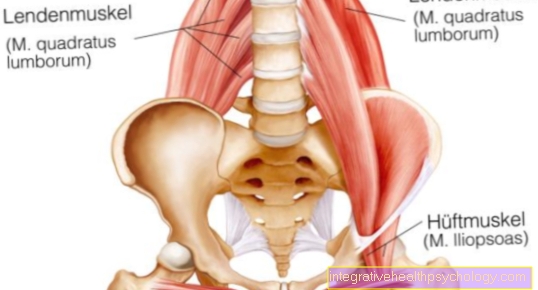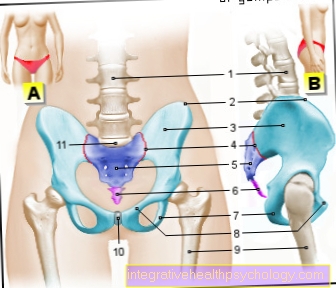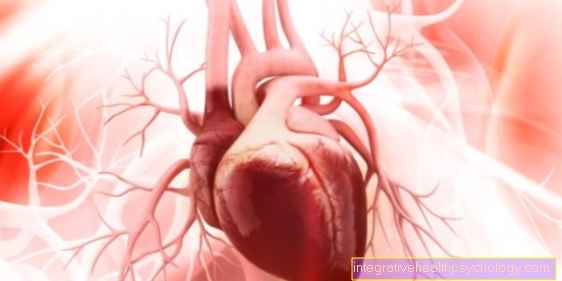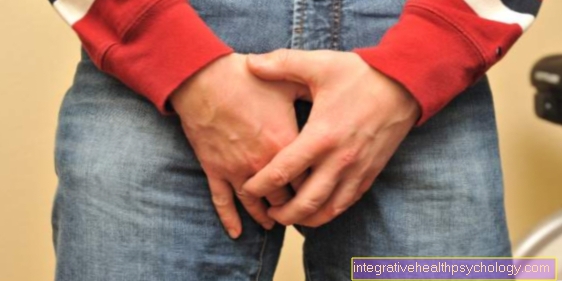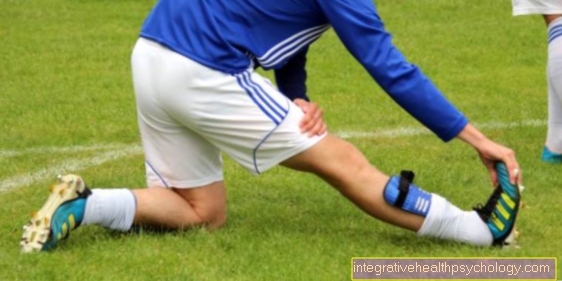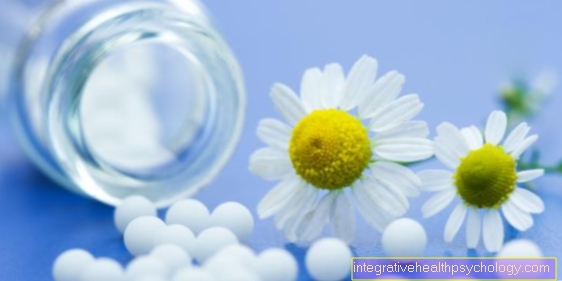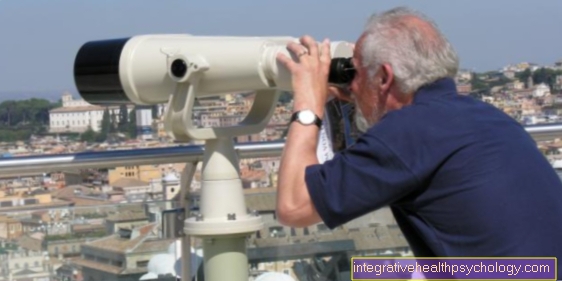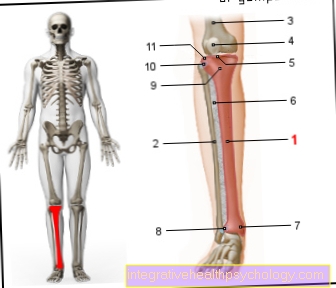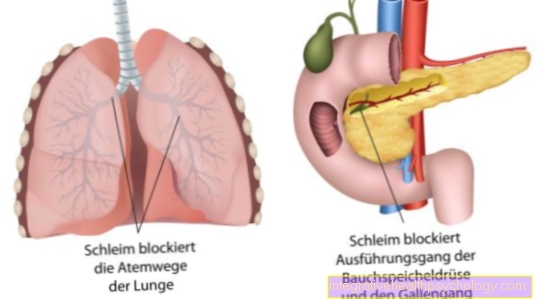Remove age spots
introduction
Age spots are called in Latin Lentigines seniles and are among the pigment disorders of the skin. These are light brown, sharply outlined spots that are most common on the back of the hand, forearms and face. The cause of the appearance of age spots is long-term exposure to sunlight, which increases with age and so age spots usually only appear in older age; hence the name.

Age spots are caused by pigment deposits in the skin and are completely harmless. So-called melanocytes, specialized cells in the skin that produce the melanin, whose occurrence in the skin determines our individual skin color, are responsible for the discoloration of the skin. In particular, age spots are accumulations of lipofuscin (so-called aging pigment), which is created by the oxidation of fatty acids in the cell membrane. The cell is not able to break down this substance, so that a large number of the particles appear from the outside as age spots.
Age spots have no disease value and can usually be removed for purely cosmetic reasons. However, there is a subtype of malignant melanoma (so-called lentigo maligna melanoma) that looks very similar to age spots, so that regular check-ups by the dermatologist are advisable in some cases.
Age spot removal options
Age spots have no disease value, the cost of removal for purely aesthetic reasons must therefore be borne by the patient himself. There are a large number of more or less effective methods with different costs.
The easiest and cheapest way to do this is to prevent age spots from developing. For this purpose, a cream with high sun protection (SPF 50) should be consistently applied to the arms and face as well as the décolleté and neck, both in summer and in winter.
Treatment with laser beams is currently considered the most effective method. The treatment is carried out by a dermatologist who uses a special device to shoot a beam of light onto the top layers of the skin so that the pigment deposits break down and are cleared away by immune cells. Another option are bleaching creams with active ingredients that lighten the age spot or stop the re-pigmentation. These include, for example, hydroquinone or rucinol. The success is only visible after a few weeks.
- Find out about another method for removing pigment spots: Fruit acid peeling
Another option are chemical peels, for example with Fruit acids (AHA = alpha hydroxy acids), which peel off the topmost discolored layers of skin so that they can form again. Also Trichloroacetic acid, a somewhat stronger acid, is suitable for this, but the treatment should only be carried out by an experienced dermatologist, as these peelings can be very irritating and injurious to the skin.
Another method is the so-called Dermabrasionwhere the dermatologist grinds off the topmost discolored layer of skin with a kind of file under local anesthesia. A similar mechanical process is that Cold therapy (Cryotherapy), in which the top layers of the skin are frozen by liquid nitrogen. These then die off and a new, uncolored top layer can form. Here, too, the treatment should only be carried out by an experienced dermatologist, as otherwise there is a risk of uneven results and even injuries with scarring.
Regardless of the treatment method, sun protection is essential after the therapy. Depending on the procedure, the sun must be completely avoided for a few weeks to months, and a cream with a high sun protection factor (SPF 50) should be applied daily. The reason for this is that the skin irritated by the treatment accumulates more pigment again.
Laser removal of age spots
Laser treatment is considered to be the most effective at fighting age spots. The treatment is carried out by the dermatologist and has to be reimbursed by the patient himself, as it is a cosmetic procedure. Whether one session is sufficient or how many treatments are necessary must be decided on an individual basis.
In the laser procedure, the doctor uses a laser with high-intensity light radiation that penetrates the top layers of the skin. There the age pigments are made to disintegrate and an inflammatory reaction is deliberately provoked in the tissue. As part of this reaction, immune cells are attracted, which transport away the decayed age pigment. The inflammatory reaction can cause the irradiated skin area to burn, and swelling is also possible.
In the weeks after the treatment, the sun should definitely be avoided and a cream with a high sun protection factor should be consistently applied in order to prevent the skin, which is sensitive to the treatment, from reacting with the formation of pigment spots again. Another risk of treatment is that too intense laser irradiation will bleach the skin too much, resulting in an irregular result. For this reason, only an experienced dermatologist should perform laser therapy.
Laser removal cost
Since age spots are a cosmetic problem with no medical significance, the cost of removing them must be paid for yourself. The cost of the treatment depends on the one hand on the size of the body surface to be treated and on the other hand on how many sessions are necessary.
Laser treatment for age spots on the face can be obtained for around 70 to 150 euros, the treatment of the body depends on the area to be irradiated (from around 200-500 euros). In addition, prices vary between the different dermatologist practices that offer the treatment. You should not only be guided by the price, but also by how much experience the respective doctor has with the treatment. Furthermore, the doctor should always take the time for an informative discussion, during which he also addresses the risks and side effects of the laser treatments.
Vitamin E.
Vitamin E. belongs to the group of fat-soluble vitamins and is known as antioxidanti.e. that it prevents fatty acid oxidation in the skin. These oxidized fatty acids cannot be recycled by the skin cells and are deposited as age pigment. Age spots are the result.
A vitamin E deficiency therefore promotes the development of age spots. Vegetable oils are particularly rich in vitamin E, and wheat germ oil contains a particularly large amount. These can be consumed to prepare food or applied locally to the skin. It should be applied to the skin after exposure to sunlight. In addition, vitamin E can easily be purchased in capsule form in the drugstore or pharmacy.
Home remedies / natural removal of age spots
Home remedies for age spots are mostly bleaching agents that are supposed to lighten the affected skin area. The best home remedy for age spots is to prevent them. For this purpose, a sun cream with a high sun protection factor should be applied in summer and winter and strong sunlight such as midday sun should be avoided.
Even if there are already age spots, further exposure to sunlight should be avoided, as otherwise the treatment may not be very successful. A very old home remedy for age spots is Buttermilkwhich is applied to the affected skin areas where it is supposed to take effect. The lactic acid contained is supposed to bleach the age spots. The one contained in lemon juice has a similar effect citric acidwhich can be applied to the affected area of the skin several times a day.
Click here for more information: Bleach for the skin
Aloe vera gel promotes skin renewal and the rejection of the uppermost, discolored skin layers and can thus be used against age spots. Also make a mixture in equal parts yogurt and honey should have a lightening effect, the paste can be left on the skin for about 30 minutes and then washed off. Another home remedy is that Vitamin E.that is effective as an antioxidant. It can be taken as an edible oil or in capsule form or applied to the skin immediately after exposure to sunlight.
Creams against age spots

Both in the drugstore and in the pharmacy there is a large selection of creams that are supposed to help against pigment spots. The price range extends from under 10 euros to the high two-digit and even three-digit range. The decisive factor is the active ingredient that is supposed to have a bleaching effect. In this way, existing age spots are lightened and the development of new discolorations is prevented.
One of these active ingredients is, for example, hydroquinone, which can also be prescribed by a doctor. Rucinol or kojic acid also have a similar effect. However, some patience is required with these creams, as the desired effect only occurs after a few weeks. In addition, sensitive skin in particular reacts irritably to the bleaching creams. It is important that the bleaching cream is only applied to the discolored areas of the skin, otherwise the entire skin will lighten and the result will be uneven.
Age spot removal on the face
The skin on the face is often particularly sensitive. Regardless of the method used, removing age spots is always associated with irritation and stress for the skin.
For this reason, one should always be one when treating experienced dermatologist entrust. On the one hand, this applies to laser treatment, if the intensity of the laser radiation is too high, the result can again be irregular.
Excessive radiation can also cause severe skin injuries, which only heal with scarring. The same applies to chemical peelings with fruit acid or trichloroacetic acid, whereby improper use can downright burn the skin, which can be associated with permanent skin damage.
The same danger arises from the incorrect use of cryotherapy or dermabrasion. In the case of bleaching creams, it is important to ensure that they are only applied to the darkly discolored age spots and not to the entire face. Otherwise, the entire face will be bleached by a few nuances, but since "healthy" skin also becomes lighter, the spots and bumps remain.
You can't go wrong with home remedies such as buttermilk or citric acid, but success only becomes apparent after a few weeks. Here, too, the bleaching agents can irritate the skin, in which case the treatment should be stopped and, if necessary, a dermatologist should be consulted. With all methods of removing age spots, the most important thing is to avoid exposure to sunlight after treatment.
Depending on the type of treatment, as with laser, sunlight must be avoided for several months and a sun protection cream with a high sun protection factor applied daily. The reason for this is that the top layers of the skin, irritated by the treatment, tend to build up pigment again due to sunlight.
Age spot removal on the hands
Basically, when treating age spots on the hands, the same must be observed as on the face, since the skin on the hands is also relatively thin and sensitive. Advice and treatment should therefore be provided by an experienced dermatologist. Even if it sounds unusual at first, care should be taken to ensure adequate sun protection on the back of the hand. This should also be renewed regularly after washing your hands in order to prevent new age spots from forming.
Also read: Age spots on the hand
Further topics from this area

Age spots
Age spots are benign pigment discolorations that occur especially in older people.They occur preferentially on skin areas that frequently come into contact with solar radiation. Here you get to the topic: Age spots

Age spots on the face
Age spots are a natural change in the skin that shows up over the course of life. The pigment deposits tend to appear on the face, as the face is often exposed to UV radiation. Here you get to the topic: Age spots on the face.

Age spots on the hand
Age spots are benign pigment changes in the skin. They occur more frequently at an advanced age and are particularly evident on the hands. The sun exposure plays an important role in the occurrence. Here you get to the topic: Age spots on the hand

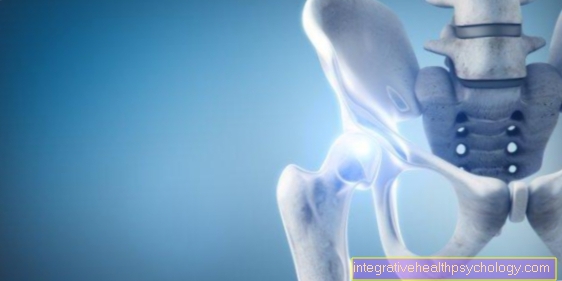


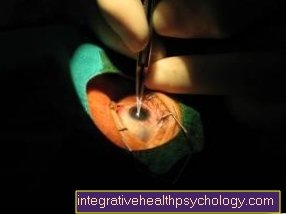




.jpg)

